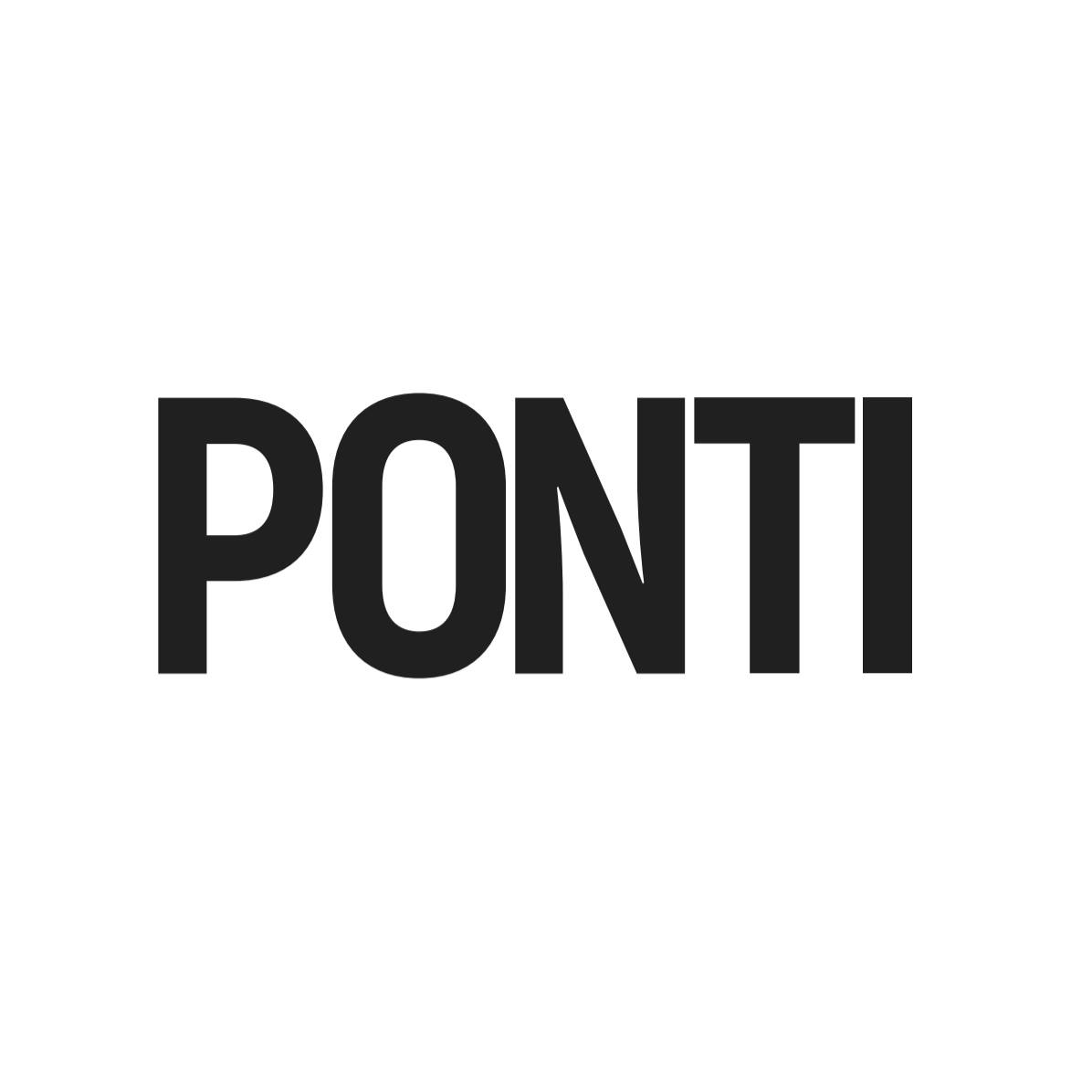
Daems van Remoortere
29.05.25 - 05.07.25
SOLO SHOW


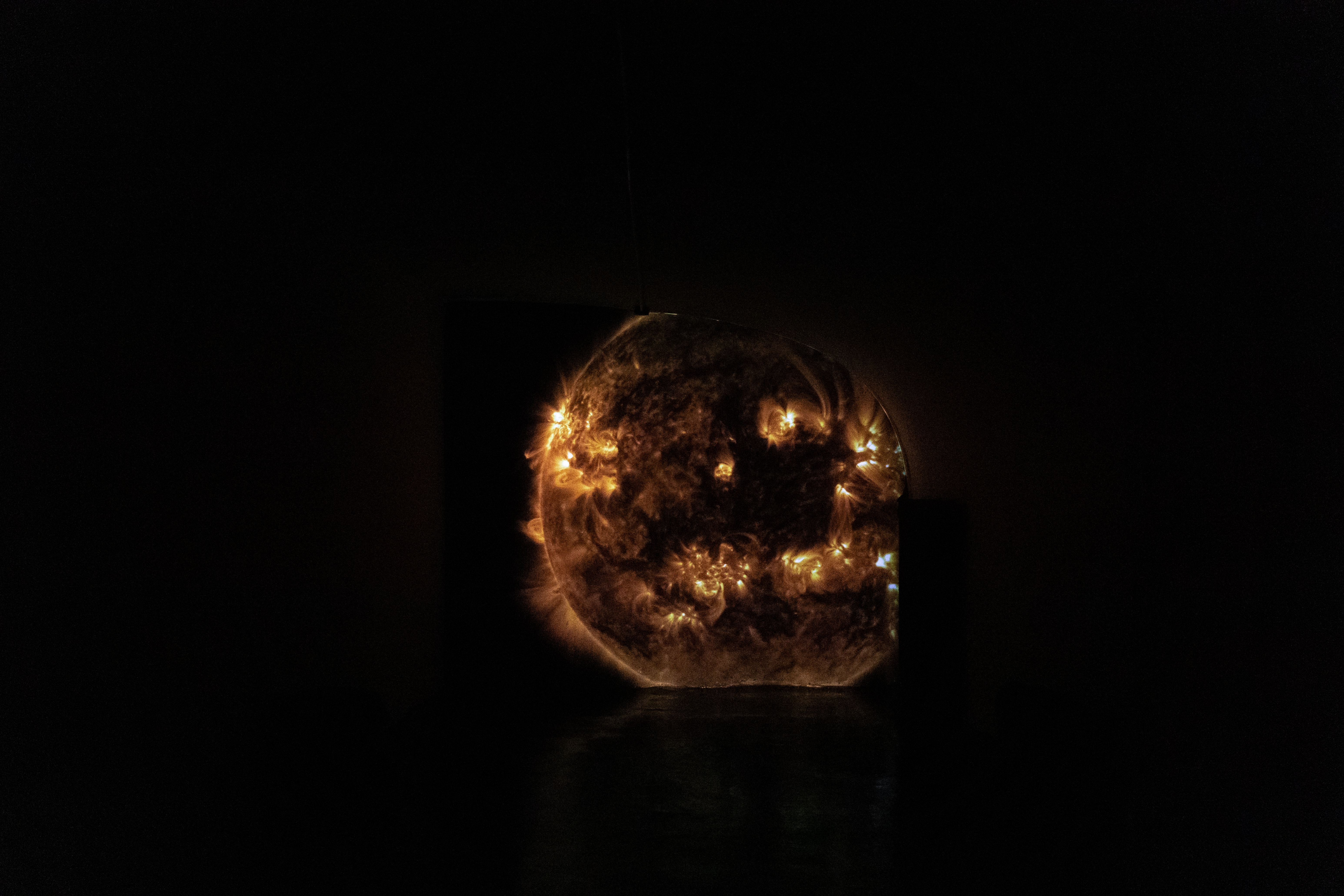
Early Morning in the Universe
After completing their permanent installation Meetingpoint at the new prison in Brussels and Sundance, presented at M HKA during Museum Games—where they explored the cycles of the sun and the seasons—Daems van Remoortere now turn their focus to the solar maximum with their new solo exhibition Early Morning in the Universe. This eleven-year turning point, during which solar activity will reach its peak in July 2025, serves as a central theme.
This peak marks the flip of the sun’s magnetic field and functions as an astronomical zero point for the exhibition.
From this ‘cosmic zero point’, they raise questions about how power and narratives shape, distort, and leave traces in history—and what might remain of these in the future.
Like a cosmic Groundhog Day, they explore the possibility of a reset—while retaining all accumulated knowledge.
Early Morning in the Universe runs from May 29 (Antwerp Art Weekend) to July 5, 2025 at PONTI, Antwerp, and aligns both scientifically and chronologically with this astronomical turning point.
After completing their permanent installation Meetingpoint at the new prison in Brussels and Sundance, presented at M HKA during Museum Games—where they explored the cycles of the sun and the seasons—Daems van Remoortere now turn their focus to the solar maximum with their new solo exhibition Early Morning in the Universe. This eleven-year turning point, during which solar activity will reach its peak in July 2025, serves as a central theme.
This peak marks the flip of the sun’s magnetic field and functions as an astronomical zero point for the exhibition.
From this ‘cosmic zero point’, they raise questions about how power and narratives shape, distort, and leave traces in history—and what might remain of these in the future.
Like a cosmic Groundhog Day, they explore the possibility of a reset—while retaining all accumulated knowledge.
Early Morning in the Universe runs from May 29 (Antwerp Art Weekend) to July 5, 2025 at PONTI, Antwerp, and aligns both scientifically and chronologically with this astronomical turning point.
Ewoud Viane
04.04.25 - 17.05.25
SOLO SHOW
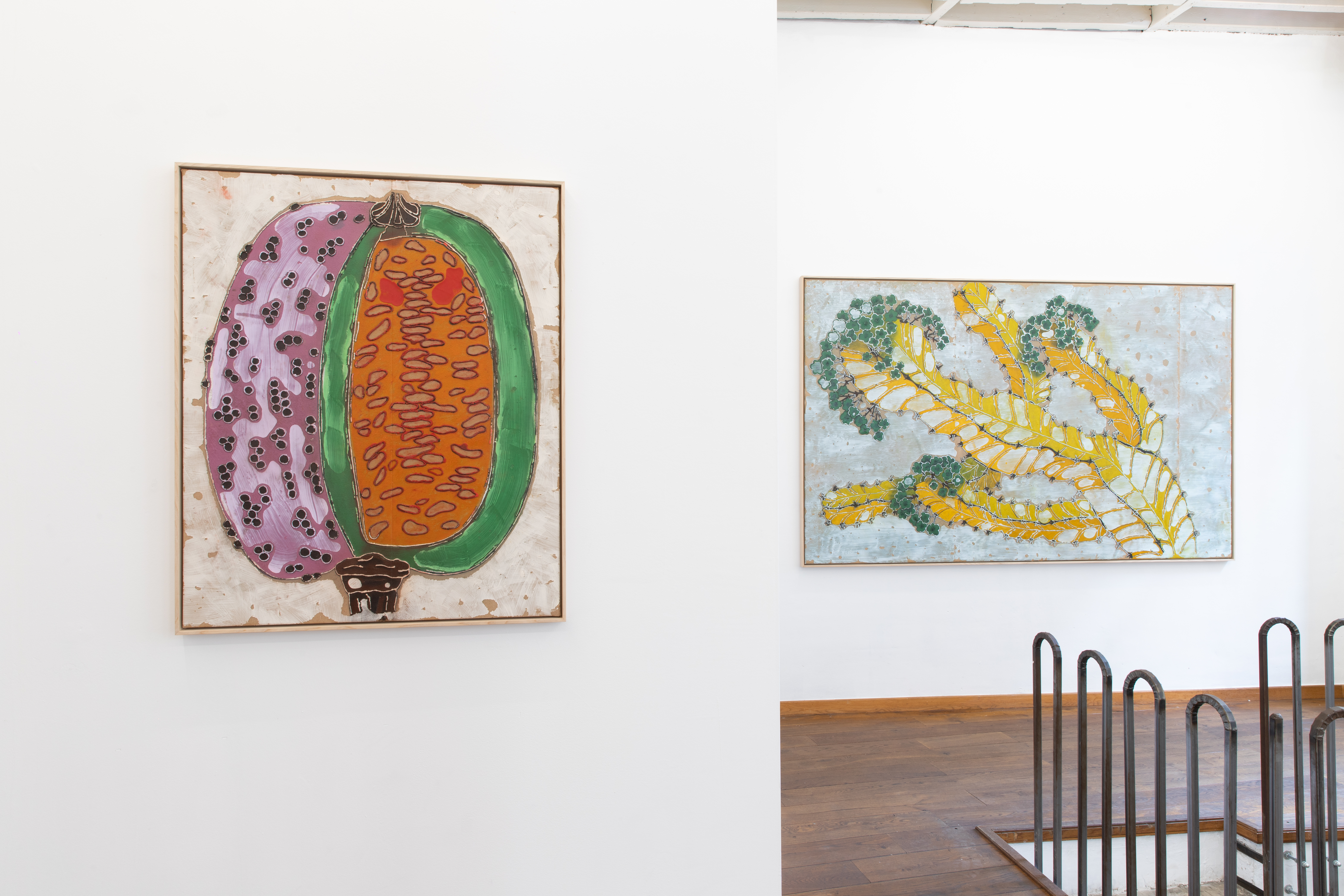

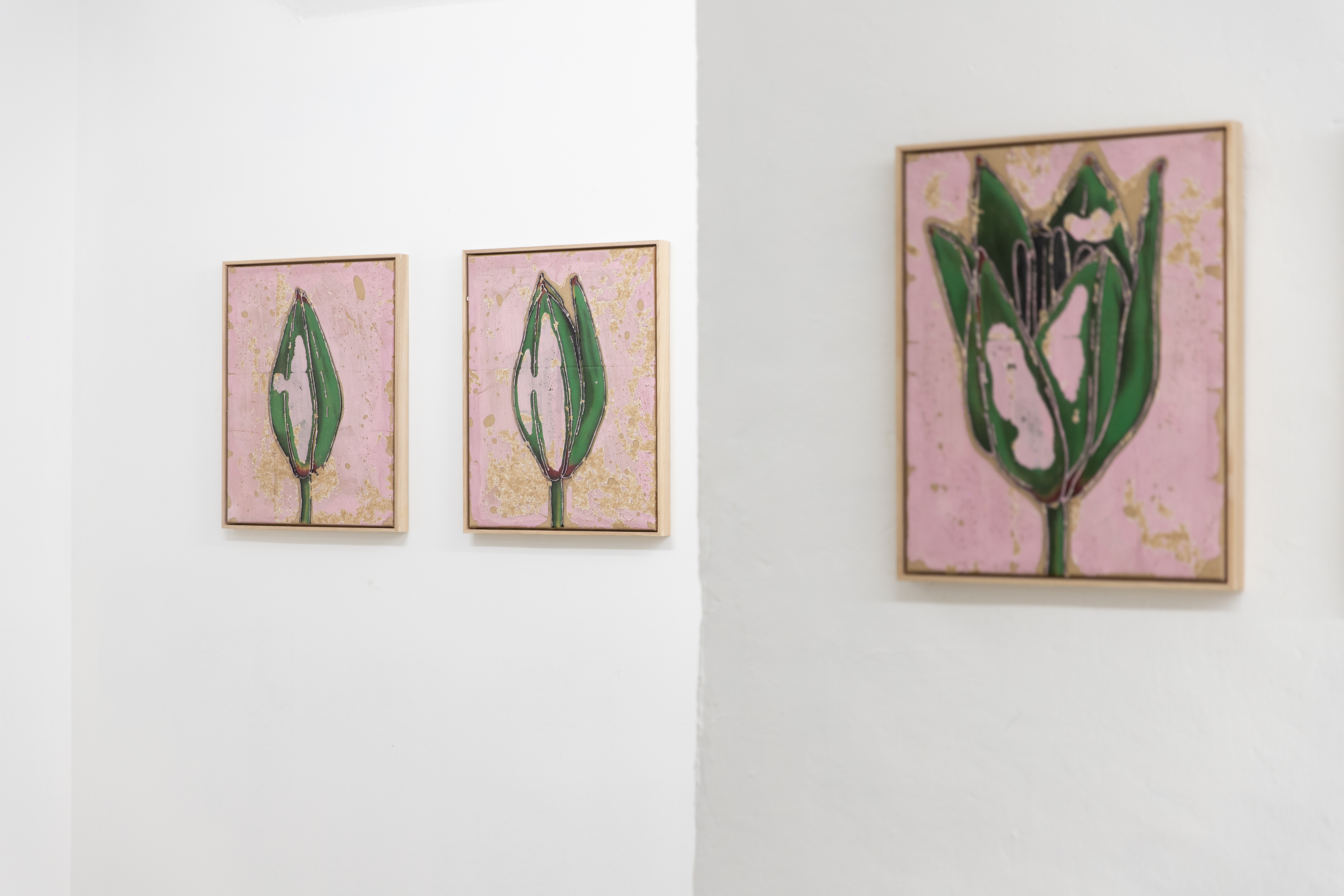
Sunny-side-up
During this exhibition, the artist will show a series of fifteen paintings, showcasing his continued exploration of textiles, wood, and epoxy resin as integral elements of his artistic practice.
Ewoud Viane (b. 1996 - Izegem) is known for his distinctive approach to painting, where he blends bold colors, layered textures, and unconventional materials to create striking visual compositions. His work often explores themes of transformation and perception, challenging the boundaries between abstraction and figuration.
During this exhibition, the artist will show a series of fifteen paintings, showcasing his continued exploration of textiles, wood, and epoxy resin as integral elements of his artistic practice.
Ewoud Viane (b. 1996 - Izegem) is known for his distinctive approach to painting, where he blends bold colors, layered textures, and unconventional materials to create striking visual compositions. His work often explores themes of transformation and perception, challenging the boundaries between abstraction and figuration.
Mashid Mohadjerin
06.03.25 - 29.03.25
SOLO SHOW

Spiralling Outward
"Spiraling Outward" marks the latest intervention by Mashid Mohadjerin, offering a dynamic exploration of her artistic vision. At the same time, Mohadjerin has a solo exhibition at FOMU Antwerp, further expanding on her thought-provoking work. During the show, Mohadjerin showcases photography, collages, and a video installation that reinforce her narrative around the themes of her latest book, Riding In Silence & The Crying Dervish. The book will also be available for viewing and purchase in our space.
Mashid Mohadjerin (b. 1976, Tehran, Iran) is a multidisciplinary artist who obtained her Doctorate in the Arts from the Royal Academy of Fine Arts Antwerp in 2021. Her work has been exhibited internationally and has received multiple awards, including the Les Rencontres d’Arles Author’s Book Award for Freedom is Not Free (2021) and first prize in the Contemporary Issues category of World Press Photo 2009.
"Spiraling Outward" marks the latest intervention by Mashid Mohadjerin, offering a dynamic exploration of her artistic vision. At the same time, Mohadjerin has a solo exhibition at FOMU Antwerp, further expanding on her thought-provoking work. During the show, Mohadjerin showcases photography, collages, and a video installation that reinforce her narrative around the themes of her latest book, Riding In Silence & The Crying Dervish. The book will also be available for viewing and purchase in our space.
Mashid Mohadjerin (b. 1976, Tehran, Iran) is a multidisciplinary artist who obtained her Doctorate in the Arts from the Royal Academy of Fine Arts Antwerp in 2021. Her work has been exhibited internationally and has received multiple awards, including the Les Rencontres d’Arles Author’s Book Award for Freedom is Not Free (2021) and first prize in the Contemporary Issues category of World Press Photo 2009.
Max Kesteloot
07.11.24 - 25.01.25
SOLO SHOW

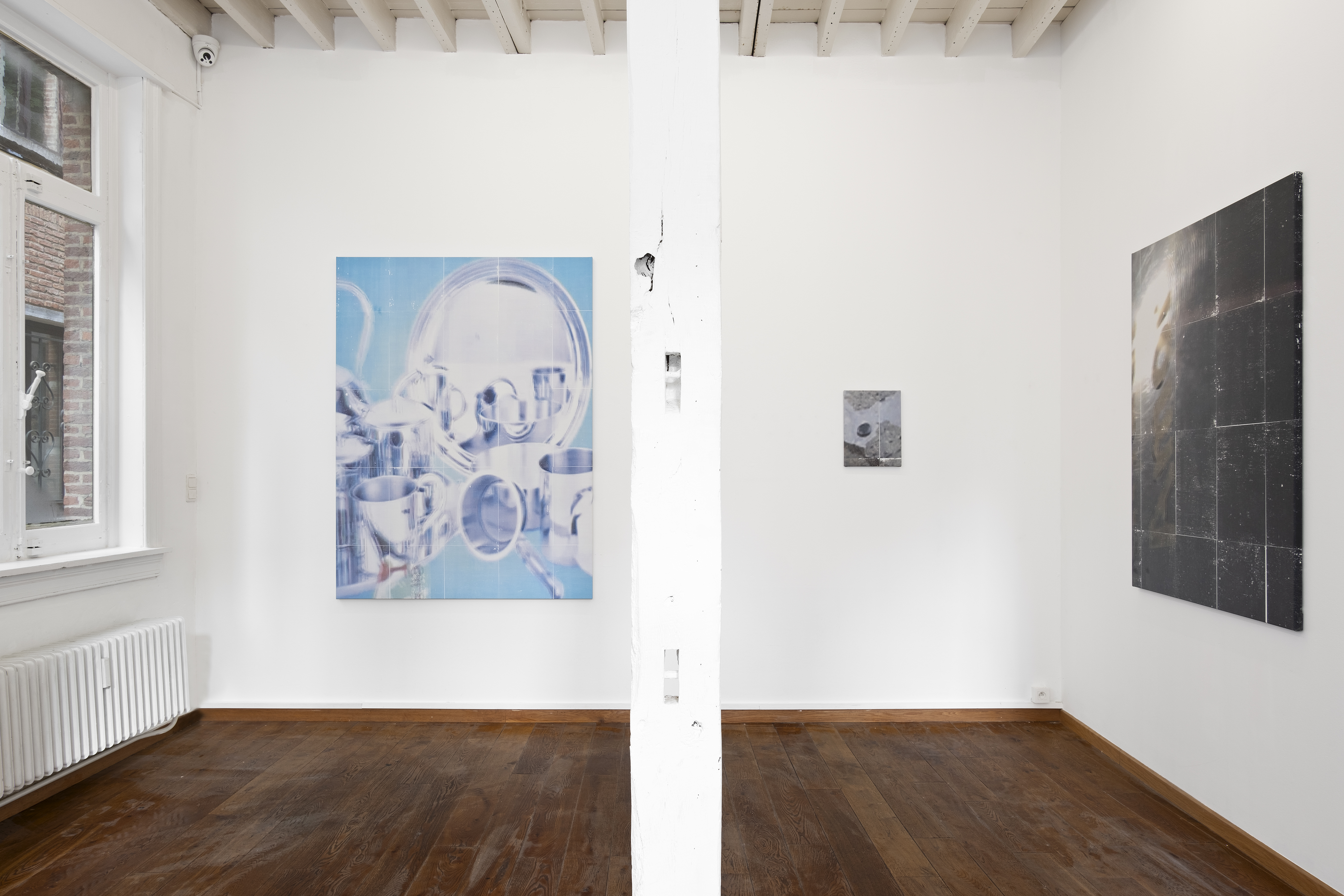
No one else can feel it for you
PONTI pleased to invite you to 'No one else can feel it for you', the latest exhibition by Max Kesteloot, opening on Thursday, November 7, from 7:00 p.m. to 10:00 p.m. at PONTI.
Belgian artist Max Kesteloot (1990) draws inspiration from road trips and walks, from his hometown of Ostend to the Spanish Costa Brava. During these journeys, he captures images that he prints immediately with a compact mini-printer to preserve each moment. He then translates these snapshots into paintings on canvas. For this exhibition at PONTI, Kesteloot has created a new series of works in which he will also present some of his original snapshots.
PONTI pleased to invite you to 'No one else can feel it for you', the latest exhibition by Max Kesteloot, opening on Thursday, November 7, from 7:00 p.m. to 10:00 p.m. at PONTI.
Belgian artist Max Kesteloot (1990) draws inspiration from road trips and walks, from his hometown of Ostend to the Spanish Costa Brava. During these journeys, he captures images that he prints immediately with a compact mini-printer to preserve each moment. He then translates these snapshots into paintings on canvas. For this exhibition at PONTI, Kesteloot has created a new series of works in which he will also present some of his original snapshots.
Jef Meyer
19.09.24 - 26.10.24
SOLO SHOW
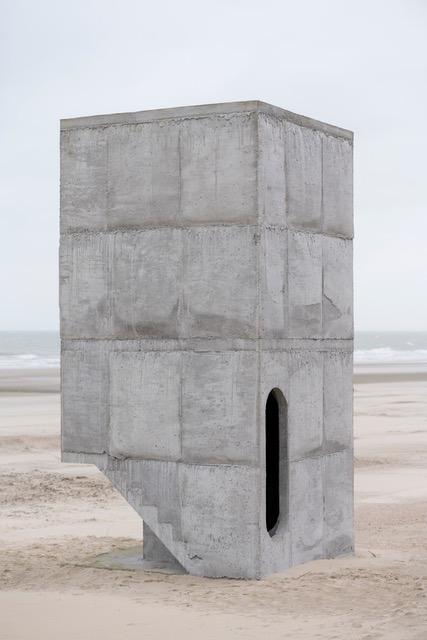
Solo
PONTI is pleased to invite you to the opening of Jef Meyer’s solo exhibition on Thursday, September 19, from 7:00 PM to 10:00 PM. This exhibition will present a selection of both old and new works by Meyer, including pieces specifically related to his sculpture for the Beaufort art triennial in Middelkerke.
Jef Meyer is known for his minimalist sculptures, primarily working with concrete. His works engage in a compelling dialogue with space and architecture, merging robust materiality with subtle geometric forms. This exhibition showcases his artistic evolution and highlights how his recent works, including those featured at Beaufort, build on his earlier explorations of form and spatial interaction.
PONTI is pleased to invite you to the opening of Jef Meyer’s solo exhibition on Thursday, September 19, from 7:00 PM to 10:00 PM. This exhibition will present a selection of both old and new works by Meyer, including pieces specifically related to his sculpture for the Beaufort art triennial in Middelkerke.
Jef Meyer is known for his minimalist sculptures, primarily working with concrete. His works engage in a compelling dialogue with space and architecture, merging robust materiality with subtle geometric forms. This exhibition showcases his artistic evolution and highlights how his recent works, including those featured at Beaufort, build on his earlier explorations of form and spatial interaction.